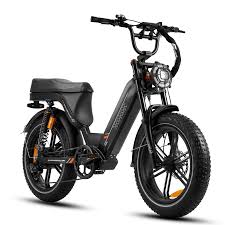Electric folding bikes (e-bikes) offer a blend of convenience, portability, and efficiency, making them an attractive option for urban commuters. One of the key advantages of electric folding bikes is their ability to be compactly folded, which raises an important question: Are electric folding bike allowed on public transportation? The answer varies depending on the type of public transport, regional regulations, and the specific policies of transit authorities. In this article, we will explore the general rules and considerations for bringing electric folding bikes on buses, trains, and other forms of public transport.
General Rules and Policies
The policies regarding electric folding bikes on public transportation can vary significantly between cities and countries. However, some general guidelines and common practices can help riders understand what to expect:
- Compactness and Folding Mechanism: The primary advantage of folding bikes, including electric ones, is their ability to fold into a compact size. Most transit systems that allow bicycles generally permit folding bikes, provided they are properly folded before boarding. The folded dimensions should meet the size requirements set by the transit authority.
- Peak Hours and Restrictions: Many public transportation systems have specific rules regarding bicycles during peak hours. During rush hour, when space is limited, there may be restrictions on bringing bikes aboard. It’s common for transit authorities to restrict bike access during these times to avoid overcrowding.
- Bags and Covers: To ensure cleanliness and prevent damage to other passengers’ belongings, some transit systems require that folding bikes be placed in a carry bag or cover. This also helps in protecting the bike itself and makes it easier to handle.
- Designated Areas: On certain types of public transportation, such as trains and ferries, there may be designated areas for bicycles. These areas are usually located at the ends of carriages or in specific bike racks. Riders should use these areas to ensure safety and convenience for all passengers.
Buses
Bringing electric folding bikes on buses is generally more restrictive compared to trains or ferries due to the limited space. However, many bus systems allow folding bikes if they meet the size requirements when folded. Here are some key points to consider:
- Size Limitations: Ensure that your folded e-bike meets the bus company’s size limitations. Typically, the folded dimensions should not exceed 30 inches in length, 15 inches in width, and 45 inches in height.
- Storage: On buses, storage space for folding bikes is usually limited to the luggage compartments or designated storage areas. Riders should ensure their e-bike is securely placed to avoid obstructing aisles or exits.
Trains
Trains generally offer more flexibility for carrying folding bikes, especially during off-peak hours. Different train systems have varying policies, but some common practices include:
- Off-Peak Hours: Most train systems allow folding bikes at any time, but during peak hours, restrictions may apply. It’s advisable to check the specific train service’s rules regarding peak hour restrictions.
- Designated Carriages: Some trains have designated carriages for bicycles. Using these carriages helps in managing space and ensures the safety of all passengers.
- Folded Condition: Ensure that the bike is fully folded and, if required, placed in a carry bag. This not only complies with the rules but also protects the bike and other passengers.
Subways and Metros
Subways and metro systems often have stringent rules regarding bicycles due to the high volume of passengers. However, folding bikes are usually allowed under certain conditions:
- Folded Bikes Only: Non-folding bikes are generally not permitted, but folding bikes are allowed if they are fully folded before entering the station and remain folded on the train.
- Peak Hour Restrictions: Like trains, subways often restrict bikes during peak hours. Riders should plan their trips to avoid these times if possible.
- Carry Bags: Using a carry bag for the folded bike is often required to keep the bike clean and compact.
Ferries and Boats
Ferries and boats typically have more relaxed rules regarding bicycles, including folding bikes. However, it’s still important to check with the specific ferry operator:
- Storage Areas: Ferries usually have specific areas for bikes, and folding bikes can be stored in these spaces. Some ferries may also allow folding bikes to be kept near the passenger’s seating area.
- Size and Weight: While size and weight restrictions are generally more lenient, it’s still important to ensure your folding e-bike is manageable and doesn’t obstruct passageways.
Regional Variations
Policies can vary widely depending on the region and the specific public transportation system. For example:
- United States: Many U.S. cities, including New York and San Francisco, allow folding bikes on public transport, with some restrictions during peak hours.
- European Union: In Europe, cities like London, Berlin, and Amsterdam are bike-friendly and typically allow folding bikes on public transportation with fewer restrictions.
- Asia: In Asian cities like Tokyo and Singapore, folding bikes are generally permitted, but rules can vary significantly, especially in densely populated areas.
Conclusion
Electric folding bikes offer a convenient and eco-friendly mode of transportation that complements public transit systems. While policies regarding their allowance on public transportation vary, the general trend is towards accommodating these bikes, provided they are compactly folded and do not disrupt other passengers. Riders should familiarize themselves with the specific rules of their local transit authorities to ensure a smooth and hassle-free journey. By adhering to these guidelines, electric folding bike users can enjoy the flexibility and convenience of combining cycling with public transportation.4o




